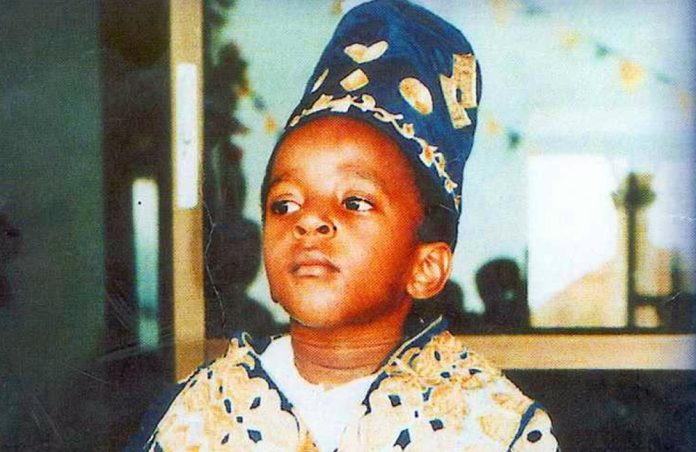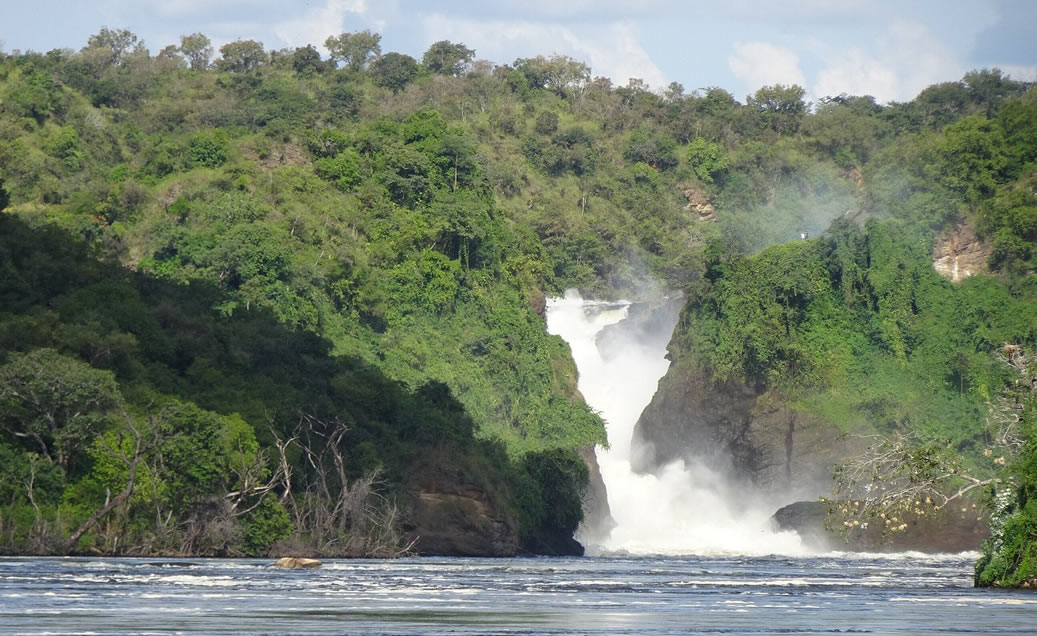When a three-and-a-half-year-old boy ascended the royal dais last year to become the undisputed titular head of the 180-year Toro Kingdom, those who witnessed the occasion couldn’t help but marvel at the extent to which culture can go.
King Oyo Nyimba Kabamba Iguru Rukidi IV, to give him his full title, has since his enthronement entered the Guinness Book of records as the youngest reigning king in the world. He replaces King Mswati of Swaziland who achieved that status in April 1986 when at the age of 18 years he succeeded his father, the late King Sobhuza II, to the throne.
Oyo’s enthronement had a peculiar coincidence: as the 12th King of Toro, his coronation day fell on 12th September. On the other hand, he broke a record set way back in the 19th century when four-year-old Daudi Chwa was crowned king of neighbouring Buganda.
Regal dignity aside, the king clutched his toy car for most part of the coronation rituals and even cried for his mother’s attention. At one point, cameras captured him extending his hands crying for a soda. When his uncle, Prince Jimmy Mugenyi, showed him the working of an electronic calculator, he burst into laughter.
Hardly the attributes typical of one described as the Omukama, the greatest of men!, and patriarch of nearly one million Batooro.
Led by the king’s spokesman, the Rev. Richard Baguma, his court was quick to defend regal dignity. “Throughout the coronation rituals, the king maintained a stately composure and watched the proceedings with keen interest,” he said.
In his allegiance speech to the Batwarane, the kingdom’s equivalent of the House of Lords, the Prime Minister, Mr. John Katuramu, said: “We are not looking for a giant to lead us; what we want is a king to guard our identity”.
The Crown Prince went through the time-tested motions of coronation on that Tuesday, September 12, as a large crowd of VIPs, that included Ugandan President Yoweri Museveni, watched.
The following day, the Omukama (King) presided over his first official ceremony – the opening of the Toro Supreme Council – attended by 50 grown-up delegates.
Waking up a three-year-old in the middle of his sleep and taking him through a 13-hour coronation ritual that makes one king of a highland kingdom in western Uganda does not only add an extra page to local history, but is something that does not always happen in a country where traditional leaders are titular heads of their people
Scenes from the coronation of Oyo Nyimba captivated many as they watched the young King clad in an overflowing blue and yellow royal robe stride down the red carpet to a small decorated traditional throne specially made for his size.
King Oyo Nyimba Kabamba Iguru Rukidi IV becomes the youngest monarch to rule the kingdom.
Oyo’s succession to the throne followed the sudden death of his father, King Patrick Olimi Kaboyo. Kaboyo’s year-old reign came to an abrupt end on August 26, 1994, when he died of hypertension. A week after his father’s burial, Oyo was woken up at 2 am and led by his two uncles to the US$200,000 palace, where the rituals were set to start.
Marching ahead of an entourage of princes and princesses, the young heir proceeded to the entrance of the royal palace where his entry was opposed from within by an “enemy force” of 500 men led by a “rebel” prince in a mock battle. Accompanied by the royal army, the king overpowered the enemy forces and sounded victory tunes from the Omujaguza, a giant traditional war drum that signals the coming of a new king.
After the mock battle, His Majesty was led to a room where the royal drums and spears had been lying upside down since the death of King Kaboyo. Inside the regalia room. The Omusuga – head of rituals – called on the gods to strike Oyo if he was not of royal blood.
“Because he is of royal blood,” said Paddy Silver Ruhweza, Toro’s secretary-general, “they did not strike him and he was permitted to ring the royal bell.”
The huge thatched structure housing the Kasubi Royal Tombs,
where the remains of Buganda’s Kabakas are laid to rest.
The bell was last rang in 1966 when Kaboyo, then aged 21, was crowned king. After the regalia ritual, the Omukama proceeded to the main entrance of the palace, where he sounded the Nyalebe, a sacred Chwezi drum.
The Chwezi are a mystic people who lived in the first half of the 14th Century. Local history has it that they once ruled a kingdom that extended into what is present-day northernTanzania.
From there the king was blessed with blood from a slaughtered bull and a white hen.
At 4 am, Oyo’s official ascension to the throne of Toro was announced and drum beats and trumpet blasts echoed off the nearby Rwenzori Mountain slopes as waiting crowds chanted; Tusemerve Okukurora, Rukirabasaija, meaning “welcome the greatest of men.”
All this time women had not been allowed to attend the secret coronation rituals. The Rev Baguma said it is a bad omen for women to attend the rituals that are performed in the dark. As daylight broke, the King ceremoniously entered the palace and sat on the lap of a virgin girl, another ritual blessing, from where he was served with a royal meal of millet dough. He was constrained to lie on one side indicating that he would adhere faithfully to his principles and decisions.
“Please don’t take me away from my mother!”, cries the King for her attention.
At this point the king cried as he was separated from his mother, Best Kemigisa Kaboyo, now the queen mother. At 10 am the king, wearing a jewel-studded crown, was carried by his uncle to St. John’s Cathedral where President Museveni, central government leaders, kingdom officials, ambassadors and other dignitaries waited.
Anglican Bishop Eustance Kamanyire, the local head of the denomination to which every King of Toro must belong, then crowned him the 12th King of Toro. He declared; “Oyo Nyimba Kabamba Iguru, I crown you Rukirabasaija (King) of Toro.”
After the service at which Catholic Bishop Paul Kalanda presented the King with a Bible, the Omukama returned to his throne at the palace where he was handed a centuries old copper spear and a leather shield. An aide who played his part swore to defend the Kingdom and its subjects with the weapons he had just received. From there, the Omukama led a procession of Abajwarakondo, to inspect the royal kraal. The Abajwarakondo is a group of highly honoured men of Toro, who include President Museveni.
As the new King strolled down a traditional carpet to greet his subjects in a traditional shed, the huge crowd went wild with joy and shouted, “haugiriza agutambae” meaning long live your highness.
The Toro monarchy has a turbulent history which has left obsevers fearing for its survival. The kingdom was founded as a secessionist state in 1830 by Prince Olimi I, a prince of the legendary Bunyoro Kitara empire.
The King jots down a few notes for future reference, as his uncle, Prince Jimmy Mugenyi looks on.
In recent times, the kingdom has had a series of misfortunes. A month after Oyo’s father, King Kaboyo, was crowned in 1966, a massive earthquake hit the kingdom destroying everything save for the earthquake-proof palace. A few months later, kingdoms were abolished by the then President, Milton Obote, and Kaboyo, like his peers, fled to exile. Before his wedding in 1987, his brother-in-law (husband to Princess Elizabeth Bagaya, at one time Idi Amin’s Foreign Affairs Minister) died in a plane crash. Another devastating earthquake hit the kingdom the month he regained his throne in early 1994. And days before his second coronation anniversary, he died in his sleep.
A night after his burial, the concrete slabs covering his tomb caved in causing slight damage to the $8,000 (Sh440,000) casket. And so when the Batooro watched the tender, young, handsome and innocent King, stroll down a red carpet ahead of a royal entourage, they couldn’t help but go ecstatic chanting “Long Live Your Highness!”
A few days later, the King flew to London where he will attend kindergarten for two years. While there, his 29-year-old mother, Best Kemigisa Kaboyo, will look after his two-year-old sister, Princess Kamukyeya, who is admitted in a London hospital suffering from Leukaemia.
The royal family’s expenses in London will be met by the Uganda Government, the President and the Kingdom.
Today, Uganda has four constitutionally recognised traditional kings. The institution of traditional kings was re-established in 1994 after two-and-half decades of limbo.
The institution was scrapped in 1966 when President Apollo Milton Obote unleashed “a go republican” campaign, usurped the federal constitution thereby abolishing all forms of traditional leadership. It was then argued that traditional leaders were promoting ethnic aggrandisement and, therefore, aggravating the country’s underdevelopment.
The ban was widely celebrated mainly due to the fact that half of the population of Uganda comes from ethnic groups where the institution of kings was never a part of their history.
The Royal Corps of Flutists.
Historically, the region that makes up present day Uganda, had five kingdoms; Bunyoro, Ankole, Toro, Bugandaand Busoga. The latter was created by the British colonial administration. Throughout the colonial era, the kingdoms survived amidst wealth and pomp. The British held the traditional leaders in such high regard that several of them were knighted.
When Uganda was declared a British Protectorate in 1884, the colonists found here a system of administration patronised by kings who held absolute power over their subjects. The system was so elaborate that the British realised it offered the most effective way of controlling the colony. They retained the kings as their intermediaries with the subjects. Ethnic groups that lacked centralised traditional forms of administration, had a separate system in which they were governed through District Councils. Both systems were directly answerable to the Protectorate Governor.
The decision to use traditional leaders as agents of colonialism in part contributed to the institutions becoming unpopular among the common folk, many of whom were forcefully conscripted for the two World Wars and made to pay a plethora of taxes. By the time Uganda gained Independence, they carried the stigma of colonialism and were despised as “agents of foreign interests”. Thus it was that in 1966, they were abolished with ease.
Idi Amin’s promises of reinstating them in the early 1970s were never effected. For two decades, Uganda’s political scene was preoccupied with dictatorship, chaos, instability and civil disobedience putting national unity at stake. It was not until President Yoweri Museveni’s rag tag National Resistance Army stormed Kampala to assume state power in 1986, that serious talks about the restoration of the institutions were revived. Arguments for and against reinstating them were freely expressed given the new found freedom of expression and association. After heated debates the Constitution was amended in 1993, authorising the restoration of traditional leaders. This paved the way for the coronation of Prince Ronald Mutebi as the 26th Kabaka of Buganda; the late Prince Patrick Olimi Kaboyo, Omukama of Toro; Prince Solomon Iguru, Omukama of Bunyoro; and the coronation this February of Prince Henry Wako Muloki as the 3rd Kyabazinga (President of the Council of Hereditary Chiefs) of Busoga.
The position of the “President of the Council of Hereditary Chiefs,” was established by British to ease administration over Busoga’s 11 hereditary chieftainships. The Kyabazinga was chosen from amongst the five royal clans with links to the legendary Babiito dynasty. Genealogically, Uganda’s Kings are said to have close links with the Babiito dynasty.
Unlike the others who seem to be widely accepted, the Kyabazinga of Busoga is charged with the task of bridging wide rifts among his subjects and, more challenging, bringing acceptance to an institution that is a creation of colonial powers.
As apolitical institutions, the Kings have been reintroduced as part of a state supported programme of cultural revivalism. It has been argued that Kings are the guardians of cultural identity and dignity. This view is based on a widely accepted concept that it is only the cultural traditions and norms that have the strength to bring peace and cooperation among Uganda’s multifarious ethnic entities.
Source: Allen Mutono in Kampala








